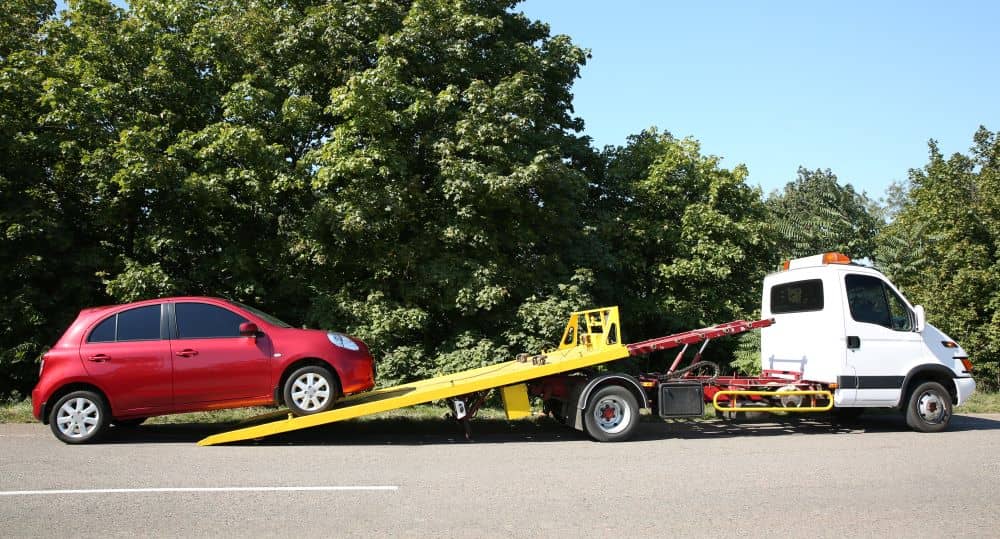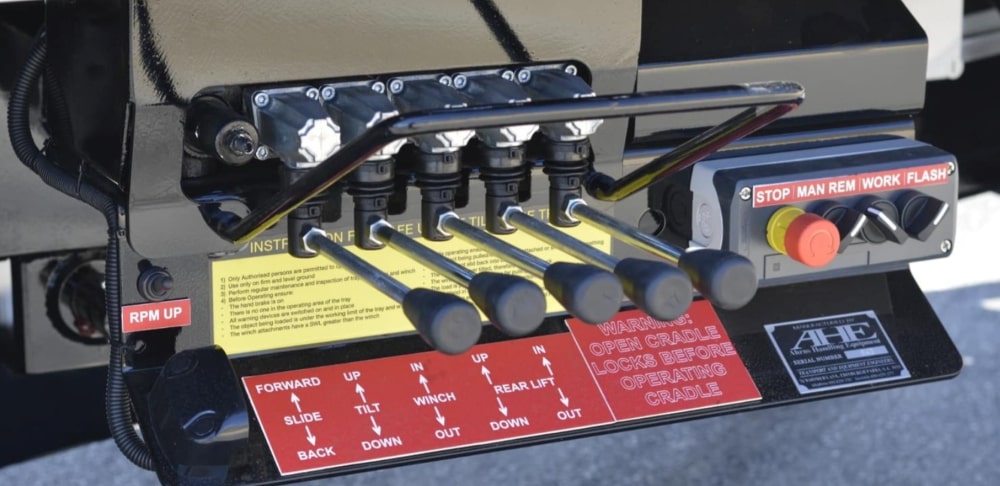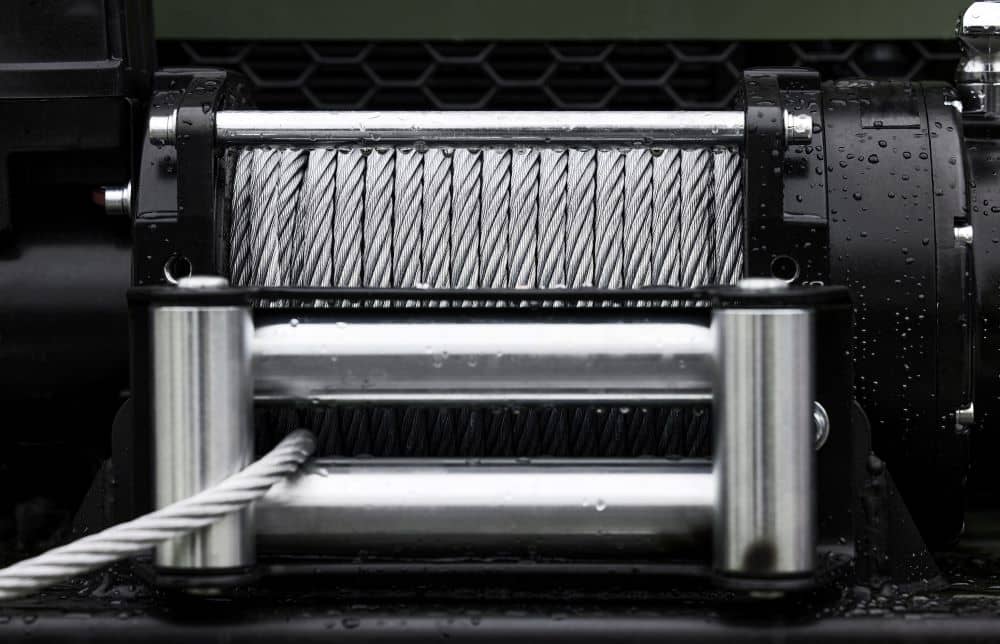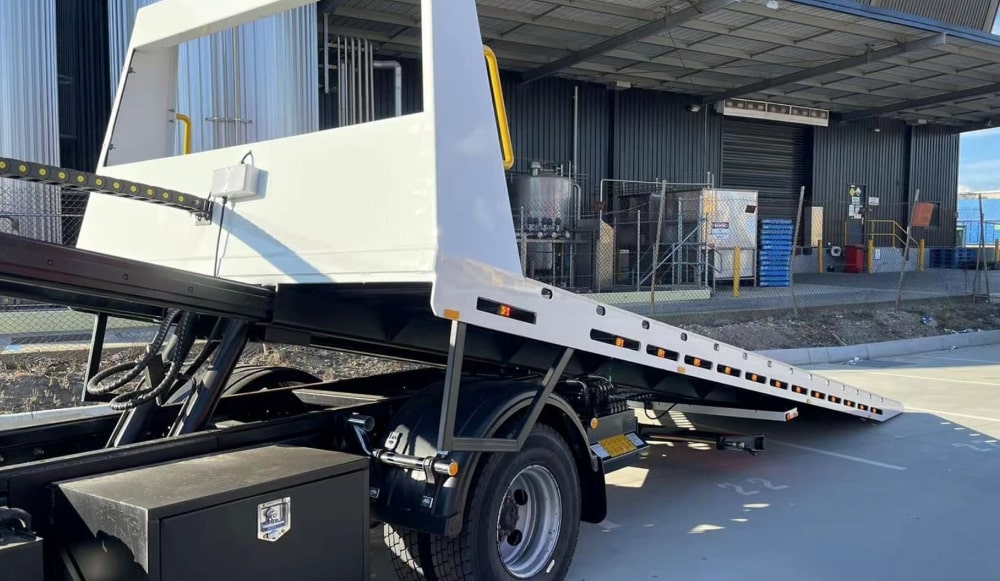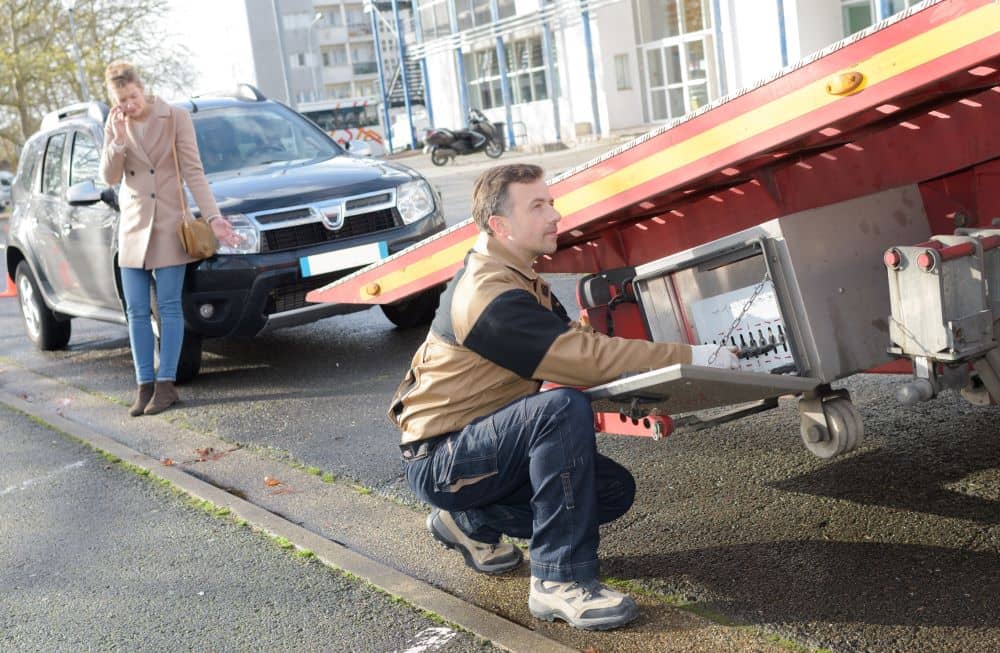Mention tow trucks, and most people visualise the image of a traditional wheel-lift tow truck pulling a vehicle down the street (like our logo). While this is still a popular way to tow cars, other types of tow trucks are safer and more efficient; one of these is the tilt tray towtrucks.
How Do They Operate?
Tilt Tray Towing is a safe and convenient method of moving vehicles from place to place. Rather than attaching the front end of a damaged car to the truck and pulling it with the back wheels touching the ground, the whole car sits on top of a towing tray where it is secured for delivery.
The tilt tray tow truck runs using a hydraulic system to reposition the tray so it can edge under the damaged car. The car is winched from the ground level. Next, it is moved into a horizontal position on the back of the truck, where it is secured and ready for transport.
How Do the Hydraulic Systems Work?
A vital component at work in the tilt tray tow truck is hydraulics. The classic definition of hydraulics is the transmission of force from one object to another by using contact with an incompressible fluid.
The hydraulic system used to operate tilt tray tow trucks is controlled by the truck’s driver. After the tow truck is in the correct position, hydraulics is used to tilt the truck’s tray, making it a ramp for the disabled vehicle.
A winch (powered by hydraulics or machine power) attaches to the car and pulls it onto the ramp where it is secured. Finally, the hydraulic system lowers the vehicle and the tilt tray back onto the truck’s bed. To learn more about how tilt trucks work and truck transport, check out the articles by Bossna Logistics.
What Are Some Benefits of Using a Tilt Tray Tow Truck?
- Security – Not all towing methods are created equally, and your vehicle could pay the price for a cut-rate tow on a wheel lift tow truck. With tilt tray towing, your car is level and secure—no worries about damaging hookups or loose attachments, just smooth delivery to the location of your choice.
- Convenience – When you call for a tow truck, you do not need to wonder what sort of tow truck will arrive and if it will be able to manage the job. The tilt tray tow truck can handle almost any job, and you will not need to wait on a different type of truck to assist you.
- Safety – As mentioned, the wheel lift tow is not always the best choice. Traditional towing could increase the damage if your car has sustained damage in an accident. You would also be at risk of parts and pieces of your vehicle dropping off. Sports cars also respond poorly to standard towing methods and frequently get damaged using wheel lift towing.
- Versatility – A tilt tray tow truck is your best option when you need different types of vehicles towed. Whether you need a passenger vehicle, heavy-duty equipment, or recreational items towed, a tilt tray tow truck is right for the job.
- High Weight Limit – Generally, the average tilt tray tow truck can carry 11 tonnes, and the majority of these tow trucks can take loads up to nine metres long. However, the specifications for heavy-duty tilt tray tow trucks may vary.
Five Situations When a Tilt Tray is Your Best Choice
1. After an Accident Where There is Significant Damage
For example, a customers car hit bridge support during his morning commute. While he was uninjured, the front end of his car was pushed in on itself, and the axle was cracked. With this much damage, a wheel-lift tow truck would have taken a considerable risk towing the car, IF it could be towed by that method. However, a tilt tray tow truck easily lifted the wrecked vehicle and secured it to the bed. Thus, safely taking the car away from the accident scene.
2. Transporting a Car, a Great Distance
For example, a customer was invited to show her classic 1957 Chevrolet convertible at a prestigious auto show in Melbourne. However, she lives around 250 kilometres away and would like to avoid the wear and tear her car would sustain from the drive. Rather than trying to tow it behind her Ute, Rae hires a tilt tray tow truck to safely transport her treasured vehicle to and from the auto show. The car is secure on top of the truck bed and arrives safely at the destination.
3. Hauling Equipment
A customer recently hired a backhoe for his landscaping company. The most practical way to get the machine to the job site is using a tilt tray tow truck with a powerful winch to place the backhoe securely on the tow truck bed.
4. Moving Site Sheds and Shipping Containers
A customers construction company works in a fairly remote location, so he hires a site shed to keep essentials close to the job site. The shed arrives safely via a tilt tray tow truck. The shed is returned using the same method when the construction project is complete.
5. Specialised Towing
Tilt tray tow trucks are uniquely designed to haul a wide range of assets. These include boats, jet skis, farm equipment, plant equipment, storage buildings, and more. Because of the hydraulic winch, these tow trucks are ideal when a boom is unavailable or impractical. Heavier tilt tray tow trucks can haul considerably larger items, including tanks and yachts.
Tilt Tray Operators
As you may imagine, operating a tilt tray tow truck is no simple task, and the job demands an advanced Tilt Tray License. Those operating a tilt tray must undergo extensive training and complete all of the necessary assessments.
This is above and beyond the requirements needed for a standard tow truck driver’s license, which include operating skills, criminal background check, citizenship requirements, and other relevant checks.
Elements of tilt tray tow truck driver training must consist of:
- Creating a safe zone for loading and unloading vehicles
- Working safely in poor weather conditions
- Loading vehicles when the ground is soft or uneven
- How to select and secure a tow point
- Safety when working adjacent to busy roads or highways
- How to handle poor lighting conditions
- The ability to calculate the degree of load exertion on equipment
- Choosing the correct load attachment points
- How to choose the best slings for the job
- When and how to use specialist slings
- How to select the proper hold-down equipment
Tips for Safe Operation
Even the most high-tech tow trucks need a trained operator to make them useful.
And an experienced operator usually knows several helpful tricks to make the job go smoothly, such as:
- If possible, back the truck behind the immobilised vehicle
- Ensure the correct slings and attachments are ready for use
- Check to see if the hook has a safety catch and be sure the mouth is closed
- The chain grab should be the same size as the chain you are using
- Always inspect web belts for wear and tear
- Look for any visible damage on winch attachments
- Double-check all attachments
The safety of the operator is also vital when operating any tow truck.
Personal Protective Equipment (PPE) should include:
- Safety shoes
- A high visibility vest
- Gloves
- Eye protection
- Sound protection
- Gear appropriate for weather conditions
While no one enjoys having their vehicle towed, knowing you and your car are in experienced hands can make a bad situation a little better. If you need towing assistance our towing experts will never leave you stranded.

